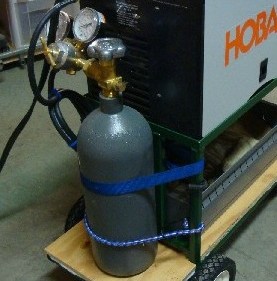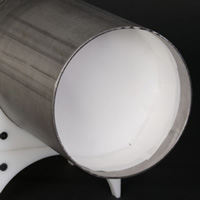Shielding and Purging Gas

Argon gas used in GTA welding for shielding purposes shall be 99.995% pure. The purity of the gas shall be certified by the manufacturer.
Nitrogen, argon or helium may be employed for inner protection. However, nitrogen cannot be used in the case of weld materials having a high nickel content. Nitrogen is a acceptable alternative for Austenitic Stainless Steel when used for welding of external attachments. A backing gas protection is not necessary for welding carbon steel.
The rate of flow for shielding purposes shall be established through procedure qualification tests. Normally this rate may be 12-20 CFH.
Argon gas with a purity level of 99.995% shall be used for purging.
When GTAW process alone or a combination of GTAW and SMAW processes is recommended for the production of a particular joint, the purging shall be maintained during the root pass and for the first filling pass to minimize oxidation on the inner side of the pipe, unless otherwise specified in Welding Specification Chart.
Backing gas is required also when supports are directly welded to stainless steel piping having thk of 4 mm and lower. According to the joint thickness, the welding process used and the size of the parts to be joined, backing gas protection may be required for the third pass too.
Initial purging shall be maintained for sufficient period of time so that at least 4-5 times the volume between the dams is displaced, in order to completely remove the entrapped air. In no case should the initial purging period be less than 10 minutes. High gas pressure should be avoided.
After initial purging, the flow of the backing gas should be reduced to a point where only a slight positive pressure prevails. For systems, which have a small volume (up to 1/2 cubic foot) to be purged, a gas flow rate of 6-CFH is usually adequate. Systems of larger volume may require higher flow rates and these should be established during procedure qualification tests.
Gas backing (purging) is not required for socket type of welded joints. It may be required for outer socket welding in the case of thin walled pipes (with thickness equal to or lower than 4 mm).

Dams, used for conserving inert gas during purging, shall be removed after completion of the welding, and shall be accounted for. Wherever, removal of dams is not possible after welding, use of water-soluble dams should be made.
